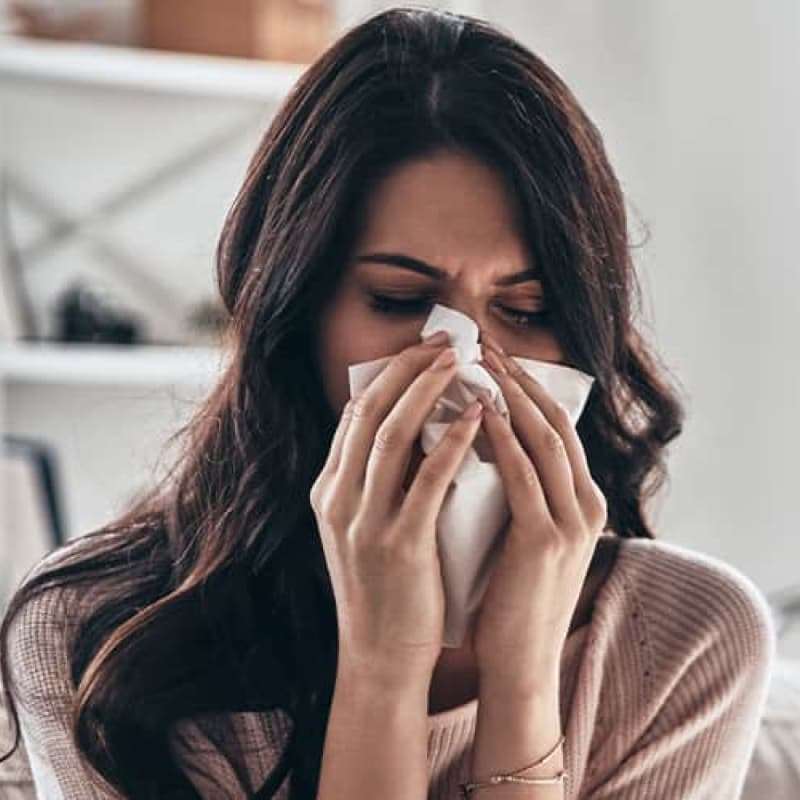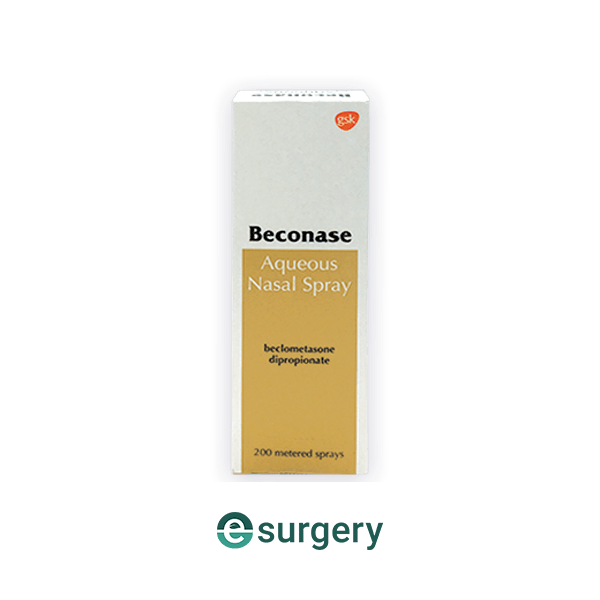
A Pollen Survival Guide For This Summer Season
Brighter days and warmer weather mark the advent of the spring and summer seasons, but it’s not all sunshine for the 10 million Britons who suffer from hay fever [1]. This common but irritating condition can seriously put a damper on the summer months, with even mild symptoms upsetting our enjoyment of the outdoors.
Truthfully, there isn’t a cure for hay fever, and it can be difficult to avoid something as widespread and practically invisible as pollen. But that’s no excuse to suffer through the summer. Like other seasonal health issues such as sun safety and hydration, mild hay fever can be easily managed with a little know-how and with the right treatments at hand.
So, let’s take a closer look at the causes of this condition and find out the most effective methods for fighting back.
What Is Hay Fever?
Hay fever is an allergic reaction to pollen. Pollen is a fine powder released by plants as part of their reproductive cycle. These airborne particles can be breathed in or become attached to articles of clothing. Particular pollen allergies will vary from person to person, but the key link between all sufferers is the compound histamine.
Histamine typically protects us from harmful infections, but in some cases it can mistake harmless objects – such as pollen – as a threat to the body. This triggers an immune response, with antibodies being released to subdue the invader. The typical features of an allergic reaction, like inflammation, are essentially caused by an immune overreaction to a certain substance (in this case, pollen).

This is why standard treatments for mild hay fever include anti-histamine medication, which help to reduce the body’s histamine response.
What Is Mild Hay Fever?
Like many medical conditions, hay fever can be experienced in degrees of intensity. Mild hay fever is a less intense, though still irritating, allergic response to pollen.
Some sufferers may find their hay fever varies in intensity depending on a given day’s pollen count (check out our UK pollen guide for more), their exposure to the pollen, and the kind of pollen that it’s in the air. For example, you might have a mild allergic response to tree pollens, but a more severe response to grass pollens.
What Are Mild Hay Fever Symptoms?
Mild hay fever can present in a variety of ways, but the most common symptoms tend to be:
• Coughing and sneezing
• Nasal congestion, or a runny nose
• Itchy, red and watery eyes
• Itching in the throat, around the mouth and the nose
If the symptoms of mild hay fever are worsened – say, by smoking or being around smoke – you could experience:
• Headaches
• Fatigue
• Earache
• Pressure and pain to the sinuses, forehead and temples
Combined with asthma, mild hay fever could lead to:
• Tightness in the chest
• Shortness of breath
• Wheezing
What Time Of The Year Is The Worst For Mild Hay Fever Symptoms?
We tend to think of mild hay fever as a late spring and summer phenomenon. That’s because the ‘pollen peak’ of many triggering plants takes place during these months. However, in some cases, mild hay fever symptoms can start as early as March and last until September. So actually, the worst time of the year for mild hay fever will depend on the kinds of pollen you are personally sensitive to.
Tree pollen releases and peaks the earliest in the year, with March and April being peak months for alder, yew, elm, willow, poplar and birch trees [2].
May is the month for plane, oak, and pine tree pollen peaks, with rapeseed starting to peak here too (though this crop can release pollen until June).

June through July is when grass starts to really become irritating to mild hay fever sufferers, although late bloomers such as Timothy grass can begin pollinating in the early autumn. In addition, this is the peak season for lime trees, nettles, dock and mugwort.
You’ll want to check our UK Pollen Guide for a more in depth run down, but you can also make use of services like the Met Office’s Pollen Forecast, which allows you to prep for the day’s pollen count in advance [3] .
Which House Or Garden Plants Are The Worst For Mild Hay Fever?
If you’re getting the sniffles inside your own home, it’s usually because a window or door is letting in the breeze, or some pollen has gotten in snagged on clothes or a pet’s fur. But for those with green fingers, it could actually be your seemingly innocuous house or garden plants (though let’s not forget the benefits of house plants too, here are 5 plants that can actually help you sleep!).
For example, the fuzzy leaves of the African Violet are adept at trapping allergens, and Marigolds can release a serious amount of pollen too. If they’re flourishing on a windowsill or sprucing up your living room, they could be contributing to all kinds of mild hay fever symptoms without you even leaving the front door.
But you don’t need to give up on plants entirely! On the contrary, the air purifying Aloe and Spider Plant could actually clear up surrounding allergens, making them some of the best plants for hay fever.
Do Home Remedies Work For Mild Hay Fever?
Some conditions can be relieved from home using simple methods. Is mild hay fever one of them?
There are a variety of hay fever home remedies touted as natural and effective solutions, but the validity of these claims can vary wildly. However, some could actually help. For example, nasal douching with salt water can work to remove allergens trapped within the passageways of the nose [4]. In fact, some pharmacies will stock salt water sachets used for the exact purpose. You’ll dilute them with regular tap water, so it’s a form of relief that can be done relatively easily from the kitchen sink.
Some sufferers say that vaseline is a cheap and effective form of nasal relief. Though typically used for skincare, the pollen prone have been rubbing a layer of the substance inside their nose and under their eyes to catch stray pollen, with the jelly acting as an effective barrier. Perhaps an odd feeling solution, but certainly less irritating than mild hay fever symptoms.
If you’re a fan of herbal teas, good news – Chamomile contains antihistamines and has been used historically as an anti-inflammatory [5] . Peppermint may also relieve nasal congestion, due to menthol compounds in its oil [6]. You may want to avoid certain alcoholic drinks, however. Beers, wine and spirits all contain histamine, with champagne potentially being the worst drink for hay fever.
If you’re just looking for some basic tips for easing mild hay fever symptoms, you can always try:
• Wearing wraparound sunglasses to block pollen from entering your eyes
• Showering and changing clothes after you have been outside
• Investing in pollen filters for air vents
• Vacuuming and dusting regularly
• Avoiding walking on cut grass

What Treatments Are Available For Mild Hay Fever?
Sometimes home remedies and helpful habits just don’t cut it when it comes to mild hay fever symptoms. If you’re looking for something a bit more reliable, there are plenty of affordable but effective medical treatments available.
Over the counter treatments are available from your local Pharmacy which include non drowsy tablets such as cetirizine and drowsy antihistamines such as chlorphenamine. Various nasal sprays are also available over the counter and it is best to speak to your Pharmacist if you are unsure of which ones to try.
If over the counter treatments are not effective for you, there are also prescription options available. Typically, prescription treatments for mild hay fever will come in two forms: nasal sprays or tablets.
Beconase Nasal Spray / Avamys Nasal Spray For Mild Hay Fever
Nasal sprays are a form of treatment for allergic rhinitis – an inflammation of the nose caused by allergens like pollen. As you may have guessed by the name, nasal sprays are applied directly onto the lining of the nostrils. Whether your allergic rhinitis is triggered by seasonal or perennial allergies, nasal sprays such as Beconase Nasal Spray and Avamys Nasal Spray can effectively relieve blocked, runny or itchy noses.
Beconase Nasal Spray contains a steroid medicine known as Beclometasone Dipropionate, a powerful anti-inflammatory that reduces symptoms of swelling or irritation in the nose. Likewise, Avamys Nasal Spray uses the Fluticasone Furoate, another effective anti-inflammatory that eases the common reactions that come with mild hay fever.

You’ll typically start with a standard dose of 2 sprays into each nostril twice a day. Like most medicines, nasal sprays will usually take a couple of days of use to start taking full effect. As long as you use the spray every day as prescribed, you should start to feel the difference – less inflammation, less sniffling, less itching.
Possible side effects from Beconase Nasal Spray or Avamys Nasal Spray may include:
• Temporary sneezes
• A dry nose or throat
• Nosebleeds
• Nasal ulceration
Telfast Tablets / Fexofenadine Tablets For Mild Hay Fever
In addition to nasal sprays, your standard tablet options for mild hay fever are always available. If you remember, the main culprit when it comes to hay fever is histamine. So antihistamine medication is an excellent choice when it comes to relieving the symptoms of mild hay fever.
The antihistamine Fexofenadine Hydrochloride is the key medicine in both Telfast Tablets and Fexofenadine Tablets. In fact, Telfast Tablets are simply the branded version of Fexofenadine Tablets. This non-drowsy antihistamine effectively soothes allergic effects such as sneezing, itchy noses and eyes, and nasal congestion.

Generally, the recommended dose is one tablet (120 mg or 180 mg) daily. You should start to feel your symptoms relieve within an hour, and it’ll remain active in your body for around 24 hours.
Possible side effects from Telfast Tablets or Fexofenadine Tablets include:
• Headaches
• Dizziness
• Drowsiness
• Nausea
Are These Treatments Available Online?
Nasal spray treatments like Beconase and Avamys, and antihistamine tablets such as Telfast and generic Fexofenadine tablets, are all available for prescription online. Make sure to order your medication from UK licensed online pharmacies such as e-Surgery, with next day delivery and discreet, fully recyclable packaging for your choice of treatment.
Here at e-Surgery, we believe summer was meant to be enjoyed. So don’t suffer from sneezes unnecessarily! Cheap and effective nasal sprays and antihistamine tablets for mild hay fever are just a click away, with Beconase Nasal Spray and Fexofenadine Tablets from just £9.95.
Sources
- Illnesses and Conditions: Hayfever | NHS Inform
- Pollen Allergy – Peak Seasons in the UK | London Allergy & Immunology Clinic
- Pollen Forecast | Met Office
- Allergic Rhinitis: Treatment | NHS
- Anti-allergic Activity Of German Chamomile | PubMed
- Menthol: Effects On Nasal Sensation Of Airflow And The Drive To Breathe | PubMed
Further Reading
- Hay Fever | NHS
- Allergic Rhinitis | NHS
- Hay Fever and Seasonal Allergies | Patient Info









